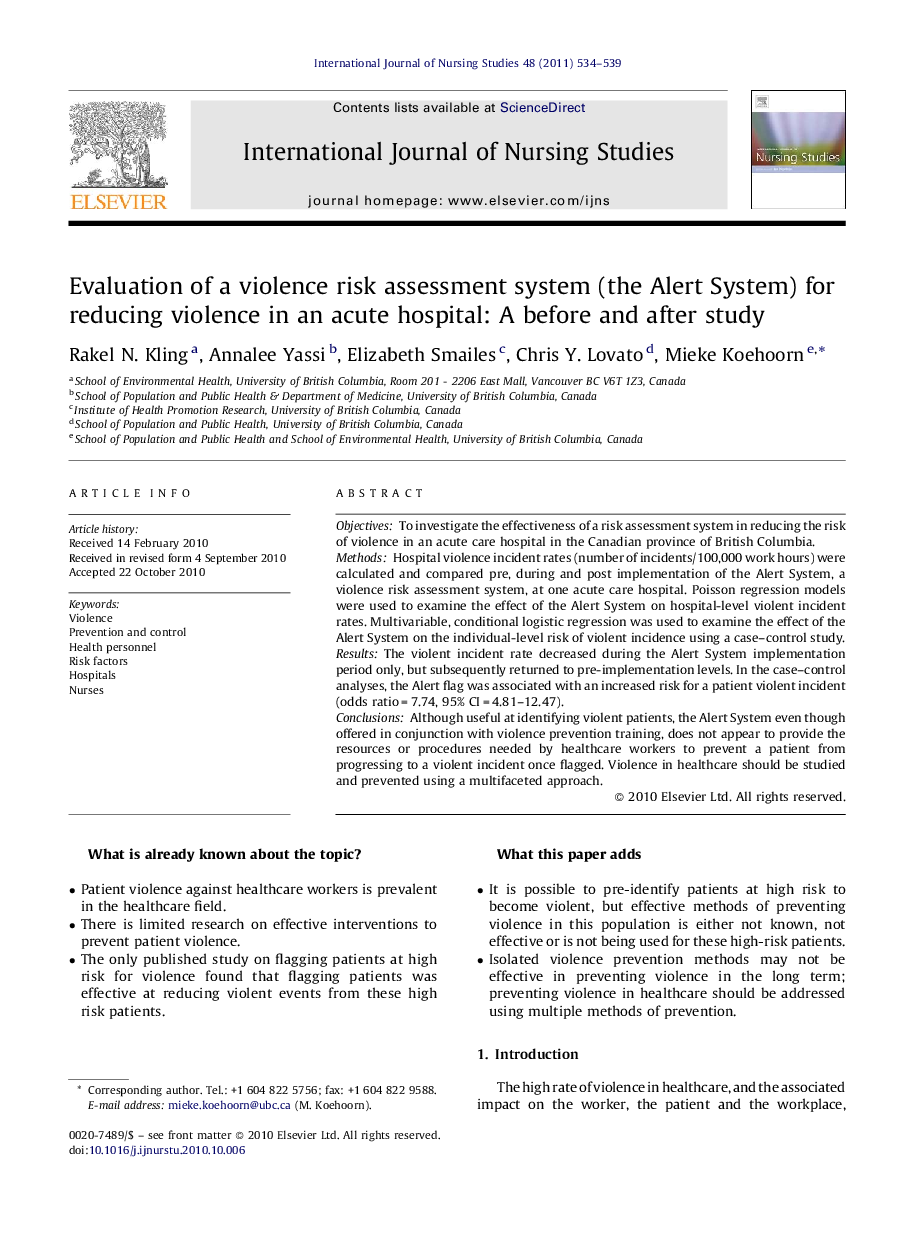| Article ID | Journal | Published Year | Pages | File Type |
|---|---|---|---|---|
| 1076682 | International Journal of Nursing Studies | 2011 | 6 Pages |
ObjectivesTo investigate the effectiveness of a risk assessment system in reducing the risk of violence in an acute care hospital in the Canadian province of British Columbia.MethodsHospital violence incident rates (number of incidents/100,000 work hours) were calculated and compared pre, during and post implementation of the Alert System, a violence risk assessment system, at one acute care hospital. Poisson regression models were used to examine the effect of the Alert System on hospital-level violent incident rates. Multivariable, conditional logistic regression was used to examine the effect of the Alert System on the individual-level risk of violent incidence using a case–control study.ResultsThe violent incident rate decreased during the Alert System implementation period only, but subsequently returned to pre-implementation levels. In the case–control analyses, the Alert flag was associated with an increased risk for a patient violent incident (odds ratio = 7.74, 95% CI = 4.81–12.47).ConclusionsAlthough useful at identifying violent patients, the Alert System even though offered in conjunction with violence prevention training, does not appear to provide the resources or procedures needed by healthcare workers to prevent a patient from progressing to a violent incident once flagged. Violence in healthcare should be studied and prevented using a multifaceted approach.
